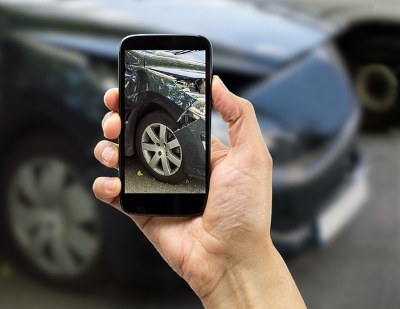Car Crash Photos, An Important Piece Of Evidence After An Accident
You’ve heard it before: A picture is worth a thousand words. This popular phrase is even more imperative as it pertains to a personal injury lawsuit. Simply put, photographs don’t lie. And because injuries may happen without warning, witnesses and those involved in the incident are likely to either forget details, or will be too traumatized to focus on them. Images can become one of the most effective types of evidence to help you prove your case.
In this article, you’ll learn more about the importance of taking pictures following an injury sustained from a car crash, as well as how to capture the significant details of the collision. However, if you’ve already suffered injuries and need to learn where to file a personal injury lawsuit, you may benefit from having a team of professional attorneys on your side.
Contact The Oshman Firm today by calling (800) 400-8182. Let us be your advocates.

Why Are Photographs Important?
Despite the nature of the automobile accident you’re involved in (i.e. rear-end collision, side-impact collision, etc.), photographs can be invaluable in determining who’s at fault. Images often reveal details about the driver(s), wreck and road conditions, making testimonies stronger, as well as more reliable.
Furthermore, because attorneys don’t often have access to vehicles immediately following a crash, pictures can help to depict evidence that may not be listed in a police report. Specifically, these pictures can illustrate property damage and personal injuries, can also show how events took place and help reconstruct the original scene of the accident.
Though photographs assist in eliminating doubt, it’s vital to remember that safety should be your central focus after a collision. Call 9-1-1 first (especially, if there are serious injuries), and then worry about photographs after you have made sure everyone involved is okay. To accomplish the task, you can use a cell phone, digital camera or even record a video.
Keep in mind that this may be your only chance to see the scene unaltered.
Capture the Details
The purpose of snapping images after an accident is to collect as many details as possible. The more pictures you take, the higher your chances are of obtaining useful information to help with a personal injury lawsuit. When taking these photographs, keep the following tips in mind:
- Take wide shots at a variety of angles to capture a complete view of the accident. This procedure will help establish the scene.
- Photograph all aspects of the wreck: traffic signs and lights, damaged objects, all vehicles involved and road conditions.
- Look for skid marks, and if they exist, take pictures of the length and breadth of them.
- Photograph all injuries, no matter how minor they may seem to be at the time.
- Include images that accurately and clearly show the date and the time of the accident.
After a few days have passed, there are other details you should document. For example, keep the progression of all injuries documented, as well as those that develop later. You should also consider returning to the scene of the crash to take pictures of the aftermath. This time, consider using a digital or other high-resolution camera.
Consult an Experienced Personal Injury Attorney
If you’ve been involved in an automobile accident, then the attorneys at The Oshman Firm want to hear from you. With decades of combined experience, we have the skills and knowledge to help you get through this difficult time. From phones calls to medical records, we will handle all aspect of your personal injury lawsuit, allowing you to focus on what’s important: healing. Contact us today by calling (800) 400-8182. We offer a free, no-obligation consultation.



